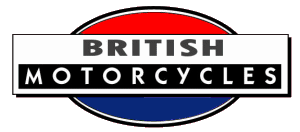


The Anglian Motor Co of Newgate Street, Beccles built motorcycles from 1903 to 1912.
In 1903 Anglian made their debut at the Crystal Palace show. Typically primitive in design, the machine was powered by a vertically mounted De Dion, Sarolea or MMC 2¾hp engine.
1905 As well as the De Dion, a lighter machine was produced - with a 2½ hp JAP engine. This also had a twin-chain primary drive to give two speeds. That year a forecar model was also listed.
1908 Advertised:
1910-1912 Only models fitted with 2¾ hp De Dion or JAP engines were available.
The company did not list any models after 1912.
Stanley Show 1903
We illustrate this machine for the manufacture of which The Anglian Motor Co., Ltd., of Beccles, has recently been formed. It will be exhibited at the Crystal Palace Show and is likely to come well to the front during next season. The engine is a 2.75 h.p. genuine De Dion, and the latest pattern De Dion float feed carburetter with throttle is fitted. Lubrication is effected by a large size sight feed pump placed so that it can be easily operated while machine is being ridden. Transmission is by heavy genuine Lincona belt. Two four volt accumulators are supplied, one as spare, and a Bassee and Michel coil. Control is by switch handle on left, and Bowden twist handle on right, operating exhaust valve lifter. The price complete is £60, and although this appears rather high, it should be borne in mind that everything is genuine throughout, and of the highest quality. There are no extras. Lamp, horn, combined stand and carrier, spare parts and a full kit of tools are included, and other advantages such as self-sealing air tubes are in the specification.
For the purpose of this notice one of "ours" had the privilege of trying the machine on some Surrey roads. The bicycle ran marvellously well, and with perfect steadiness over some greasy stretches, and when a dry surface was reached, gave full evidence of possessing all the power that a speed man could wish. It mounted a long tricky hill, with sharp turns and a rather loose surface, without pedal assistance, leaving behind a motorcycle of a different make rated at the same power, which failed to rise to the occasion and had to be pushed to the top. Over heavy roads it made light work of a trailer with passenger.
The Anglian Motor Co., Ltd.
This firm, which hails from Beccles, will make its bow to the motor cycling world at the Crystal Palace. The company's motor bicycle is fitted with a 2¾ h.p. De Dion or M.M.C. engine, placed vertically in the frame, the drive being by a. Regina-Lincona belt, which is over 8ft. long. Two four-volt accumulators are carried and a genuine Baseé and Michel induction coil. The control is by means of a Bowden twist handle exhaust lifter, which we found far handier to operate than the trigger variety. The firm's representative happening to be in town a few days ago, we had a trial trip on this machine, and found it take some steep rises well and without assistance. It is illustrated on this page.
Crystal Palace Show 1903, The Motor Cycle November 18th 1903 Page 802
The new Anglian tricar is completely different from anything the company have hitherto produced. It is known as the ladies tricar, since it has an open frame. The machine is driven by two air-cooled engines coupled together, but having one contact breaker similar to that used on two-cylinder motor bicycles. From the engines two chains run to the countershaft. These chains are provided with fibre-covered jockey pulleys, which take up any slack which there may be, while the gear is the well-known Anglian two-speed gear, which was fully described in our last issue. The frame, which is rigid, is well designed and strong. A 10in. clutch is supplied. The ordinary type of band brake is fitted to the front wheels, but the rear band brake, which is operated by a side ratchet lever, is self-adjusting, insomuch as when the back wheel is moved backwards so as to tighten the rear chain, if two nuts on the brake mechanism are slack, the band resumes its normal position. This brake is also fitted to the earlier form of tricar, which is driven by a De Dion engine fitted with a water-cooled head. On this machine high-tension magneto and the accumulator system are fitted. The wiring is considerably simplified by using an adapter, by means of which two plugs are carried in the cylinder. Both contact breakers are, of course, coupled up together.
Sources: Graces Guide, Tragatsch p74, The Motor Cycle.
If you have a query about Anglian motorcycles please contact us